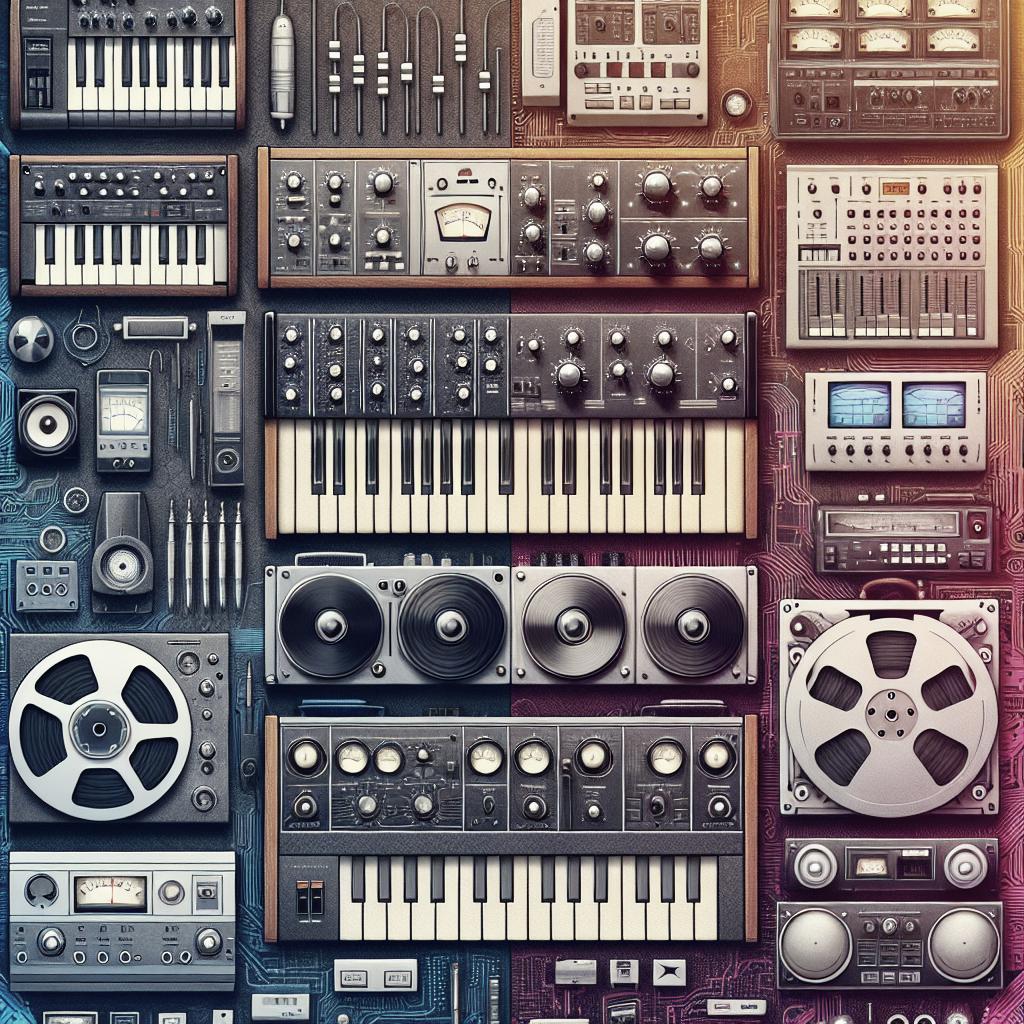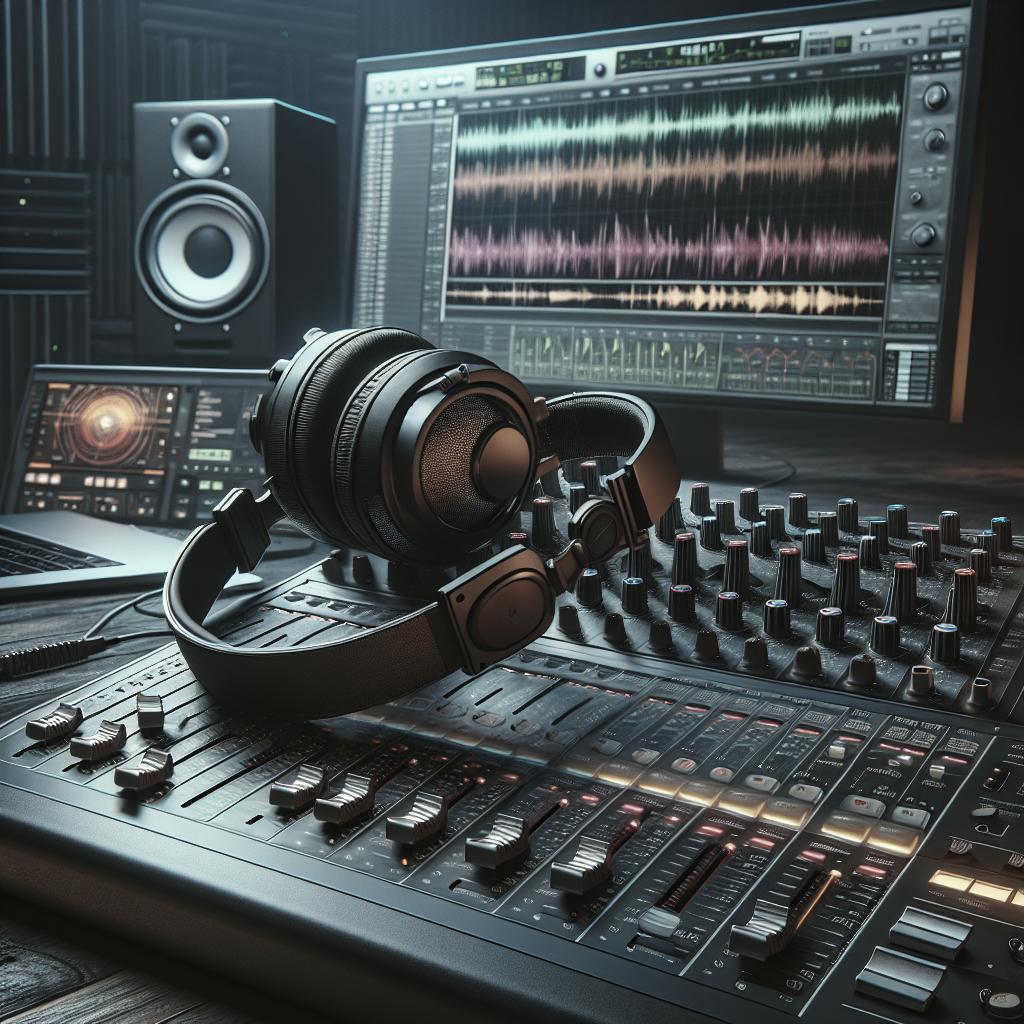<>
“`
Introduction
Electronic music has continually evolved to feature a diverse array of sounds and techniques that captivate audiences worldwide. Central to this genre is the differentiation between analog and digital music, two paradigms that fundamentally shape how music is produced, perceived, and experienced. Analog music is often revered for its nostalgic, warm, and organic qualities, while digital music shines with precision, versatility, and convenience. This blog post explores the distinctions between analog and digital electronic music, delving into their production methods, the ongoing debate among enthusiasts, and the implications of these advancements in today’s music landscape.
Analog Music: Nostalgia and Warmth
Analog music is cherished for its warm, rich, and full-bodied sound. The unique character of analog sound arises from the continuous waveforms produced by analog synthesizers. Listeners often describe this type of music as possessing a certain “soul” due to the subtle imperfections and variations that analog equipment introduces. These characteristics are especially evident when compared to the often perceived ‘sterile’ quality of digital sound.
Analog electronic music benefits from the peculiarities of voltage-controlled oscillators and filters that contribute to its renowned sound texture. With each note and sound being slightly different from the last, the analog experience is one of organic dynamism. Musicians and producers who favor analog gear appreciate the palpable connection to their instruments, where the equipment’s physicality plays an essential role in music creation.
Analog Music Production
The production of analog electronic music involves using hardware synthesizers, drum machines, and effects processors. These pieces of equipment generate and manipulate sound using analog circuits and components. The process is inherently tactile, with musicians physically interacting with their instruments to tweak knobs, sliders, and patch cables to sculpt their desired sounds. This hands-on approach is a hallmark of analog music production, appreciated by artists who seek an immersive and visceral creative process.
One of the key elements of analog music production is the recording method. Analog recordings capture sound onto tape, which imparts a distinct warmth and saturation to the audio. This process often results in subtle harmonic distortions and tape hiss, contributing to the overall vintage charm of analog recordings. For many musicians, this analog tape medium is integral to achieving a classic sound that digital recording cannot precisely replicate.
Digital Music: Precision and Convenience
Conversely, digital music is recognized for its unparalleled precision, consistency, and versatility. Digital synthesizers, samplers, and effects use binary data (0s and 1s) to generate and manipulate sounds. This technology allows for meticulous control over every aspect of sound production, resulting in crisp and clean audio with a high degree of accuracy. Unlike analog, where variations in performance are celebrated, digital music thrives on reproducibility and flawlessness.
Digital music also excels in its ability to integrate seamlessly with modern computer software, offering producers an expansive toolkit for creating, editing, and refining their music. With vast libraries of virtual instruments and effects, as well as powerful digital audio workstations (DAWs), digital production is highly efficient and accessible. This convenience enables rapid experimentation and iteration, fostering creativity in ways that analog systems may struggle to match.
Digital Music Production
The production of digital electronic music heavily relies on software-based tools and virtual environments. Digital audio workstations (DAWs) serve as the central hub for composing, arranging, recording, and mixing music. These platforms offer an intuitive and flexible workspace, with drag-and-drop functionality, automation, and real-time processing capabilities that streamline the creative process. Additionally, virtual instruments and plugin effects simulate analog gear, providing a wealth of sonic possibilities within a computer-based setup.
Digital recording captures audio in a binary format, ensuring consistent and high-fidelity sound reproduction. This method eliminates the noise and distortions inherent to analog recordings, resulting in a clean and accurate sound profile. Advances in digital technology also allow for high-resolution audio formats, offering exceptional detail and clarity. This precision is particularly beneficial in genres that demand pristine sound quality, such as electronic dance music (EDM) and cinematic scores.
The Digital-Analog Divide
The distinction between analog and digital electronic music is deeply rooted in their respective technologies and philosophies. Analog adheres to continuous signals and physical manipulation, while digital embraces discrete binary data and software-based control. These foundational differences influence every aspect of music creation, from sound generation to recording and production techniques. Musicians and producers often choose their preferred medium based on their sonic preferences, creative workflow, and desired outcomes.
Despite their differences, analog and digital music are not mutually exclusive. Many contemporary artists adopt a hybrid approach, leveraging the strengths of both analog and digital tools. By combining analog warmth with digital precision, they achieve unique and innovative sounds that transcend traditional boundaries. This blending of technologies exemplifies the ongoing evolution and synergy within the electronic music landscape.
Analog vs. Digital Debate
The analog versus digital debate has long been a topic of contention among musicians, producers, and audiophiles. Advocates of analog music argue that its warmth, depth, and unpredictability provide a more authentic and emotionally resonant listening experience. They value the hands-on interaction with analog gear and the organic sound qualities that digital systems often struggle to replicate.
On the other hand, proponents of digital music emphasize its precision, flexibility, and convenience. Digital technology democratizes music production, enabling anyone with a computer to create professional-quality tracks. Supporters appreciate the vast array of tools and resources available in the digital realm, as well as the ability to produce music with exacting control and consistency.
Today vs Yesterday
In today’s music industry, the lines between analog and digital music production are increasingly blurred. Modern musicians often employ a mix of analog and digital technologies, harnessing the best of both worlds to craft their sound. This hybrid approach reflects a pragmatic and innovative mindset, where the ultimate goal is to serve the music rather than adhere to a specific technological ideology.
Historical perspectives also play a role in shaping preferences and trends. While analog music evokes nostalgic memories of past eras, digital music represents the cutting-edge and future-forward aspirations of the industry. As technology continues to advance, the integration of AI and machine learning into digital music production promises to unlock new creative potentials, further expanding the horizons of what is possible in electronic music.
Lessons Learned
| Aspect | Analog Music | Digital Music |
|---|---|---|
| Sound Characteristics | Warmth, richness, organic imperfections | Precision, clarity, consistency |
| Production Techniques | Hardware synthesizers, tactile interaction, tape recording | Software-based tools, virtual instruments, digital recording |
| Technological Foundation | Continuous waveforms, analog circuits | Binary data, digital processing |
| Advantages | Authentic sound, tactile creative process | Flexibility, efficiency, high-fidelity audio |
| Hybrid Approach | Combining strengths of analog and digital | Blending warmth of analog with precision of digital |
“`


